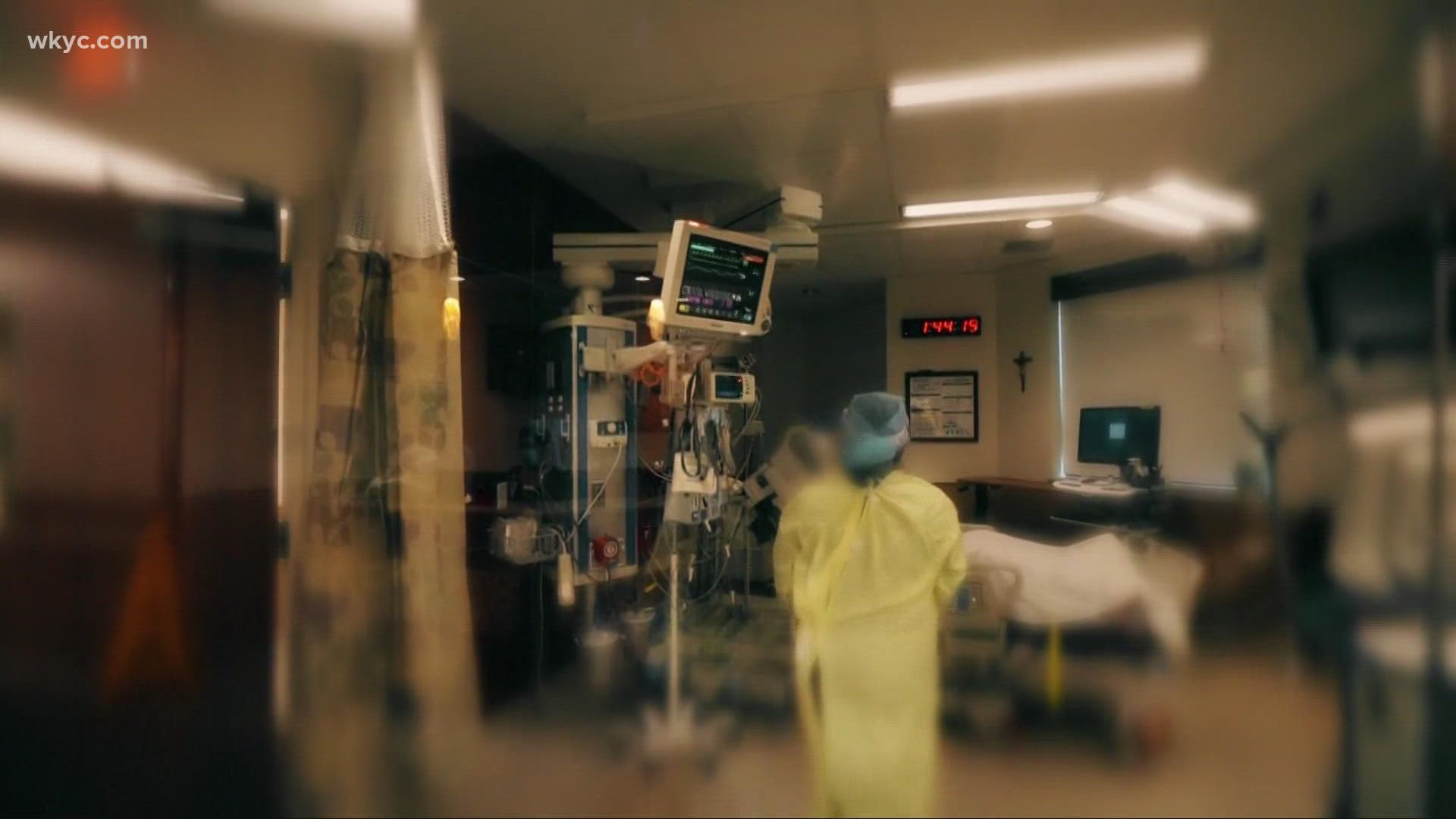CLEVELAND — Ohio continues to see unprecedented levels of COVID-19 hospitalizations and it's making care hard to come by, as one local family found out.
This is the hospital surge state health leaders feared.
James Shimp and his mom Theresa experienced it this week.
"At four o'clock in the morning, she (Theresa) was transported by ambulance to the (Cleveland Clinic) Akron General Hospital. She was taken off the gurney and putting a wheelchair and she, uh, was put in the waiting room and she was there for 22 and-a-half hours," James Shimp told us.
74-year-old Theresa was having trouble breathing, dealing with severe swelling from her congestive heart failure. "People that have heart conditions, having trouble breathing, you know, in the past that's always been a priority," James added. "To put mom in a wheelchair, I was a little shocked. I thought, 'well, surely they're gonna come see her.'"
12 hours later when James was out of work, he joined her – bringing her first water or meal of the day. James says staff took her vitals, but provided no other care until they gave up 22 hours later and went home.
James was understandably upset when we spoke with him on Friday. "What if I wouldn't have been able to get here? She's stranded in your, her waiting room. There's nobody to help her to the bathroom. She's having a hard time breathing," he said. "Here's my mom suffering. And there's no doctors on the floor. If you're at the hospital this long and there's no doctors, I understand that you don't have any beds. You don't have any place to take them, I understand. But this is a problem that's been going on for two years and you're not prepared."
Dr. Robert Willey with Cleveland Clinic says the bottleneck starts because there is no bed space on the hospital floor, so patients being admitted are backed up in the ER, while others are treated right there in the waiting room. He emphasized that no one is being turned away from the ER.
"So rather than just let these patients sit there, and nobody pay any attention to them, we put our staff out in the waiting areas to triage them," Dr. Willey explained. "That’s intentional, it’s not by accident that we’re moving into the waiting areas and making sure that we touch base with everybody who’s there. To make sure we do a rapid assessment and take back the sickest people that we need to take back and attend to them immediately."
The other issue is staff.
More than 1200 Ohio National Guard members have been deployed to approximately 40 hospitals around the state to help with staffing, including at Akron General.
Only 140 of them are on medical teams, the rest are providing needed services such as patient transport, food and cleaning. They are turning over rooms as 1 in 3 people are COVID positive in Ohio's hospitals.
75 percent of the people who are hospitalized for COVID are unvaccinated, 87 percent in ICU units are unvaccinated, and 91 percent of the people on ventilators are unvaccinated.
The best news today was that new cases in Cuyahoga County seem to be dropping by about 25% in the last two weeks, mirroring the 'ice pick' curve of omicron first seen in South Africa.
"We’re keeping our fingers crossed that that same decline they saw in South Africa, we will see a decline. Maybe not as sharp, but we hope to see a steady decline and It think we’ve got the first inkling of that in Northern Ohio right now," Dr. Willey added.
However, health officials predict hospitalizations could peak sometime later this month. Cleveland Clinic is now seeing twice as many providers returning to work, than those staying home with COVID. But they still had about 3,000 caregivers out sick as of Friday morning.
More COVID-19 coverage:

